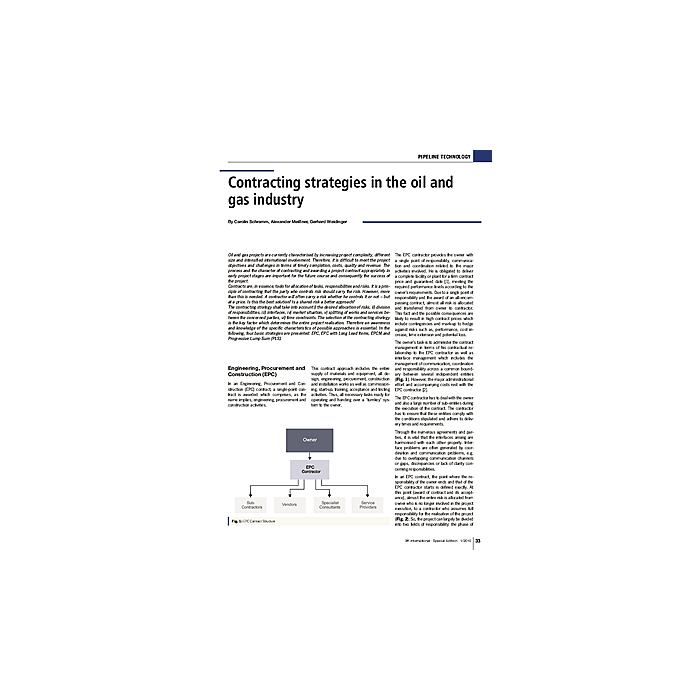Contracting strategies in the oil and gas industry
4,90 €
Auf Lager
Artikelnummer
01252_2010_SP1_06
Oil and gas projects are currently characterised by increasing project complexity, different size and intensi-fied international involvement. Therefore, it is difficult to meet the project objectives and challenges in terms of timely completion, costs, quality and revenue. The process and the character of contracting and awarding a project contract appropriately in early project stages are important for the future course and consequently the success of the project. Contracts are, in essence, tools for allocation of tasks, responsibilities and risks. It is a principle of contracting that the party who controls risk should carry the risk. However, more than this is needed. A contractor will often carry a risk whether he controls it or not - but at a price. Is this the best solution? Is a shared risk a better approach? The contracting strategy shall take into account i) the desired allocation of risks, ii) division of responsibilities, iii) interfaces, iv) market situation, v) splitting of works and services between the concerned parties, vi) time constraints. The selection of the contracting strategy is the key factor which determines the entire project realisation. Therefore an awareness and knowledge of the specific characteristics of possible approaches is essential. In the following, four basic strategies are presented: EPC, EPC with Long Lead Items, EPCM and Progressive Lump Sum (PLS).
| Autoren | Carolin Schramm/Alexander Meißner, Gerhard Weidinger |
|---|---|
| Erscheinungsdatum | 30.04.2010 |
| Format | |
| Zeitschrift | 3R - Special 1 2010 |
| Verlag | Vulkan-Verlag GmbH |
| Sprache | English |
| Seitenzahl | 4 |
| Titel | Contracting strategies in the oil and gas industry |
| Beschreibung | Oil and gas projects are currently characterised by increasing project complexity, different size and intensi-fied international involvement. Therefore, it is difficult to meet the project objectives and challenges in terms of timely completion, costs, quality and revenue. The process and the character of contracting and awarding a project contract appropriately in early project stages are important for the future course and consequently the success of the project. Contracts are, in essence, tools for allocation of tasks, responsibilities and risks. It is a principle of contracting that the party who controls risk should carry the risk. However, more than this is needed. A contractor will often carry a risk whether he controls it or not - but at a price. Is this the best solution? Is a shared risk a better approach? The contracting strategy shall take into account i) the desired allocation of risks, ii) division of responsibilities, iii) interfaces, iv) market situation, v) splitting of works and services between the concerned parties, vi) time constraints. The selection of the contracting strategy is the key factor which determines the entire project realisation. Therefore an awareness and knowledge of the specific characteristics of possible approaches is essential. In the following, four basic strategies are presented: EPC, EPC with Long Lead Items, EPCM and Progressive Lump Sum (PLS). |
Eigene Bewertung schreiben


